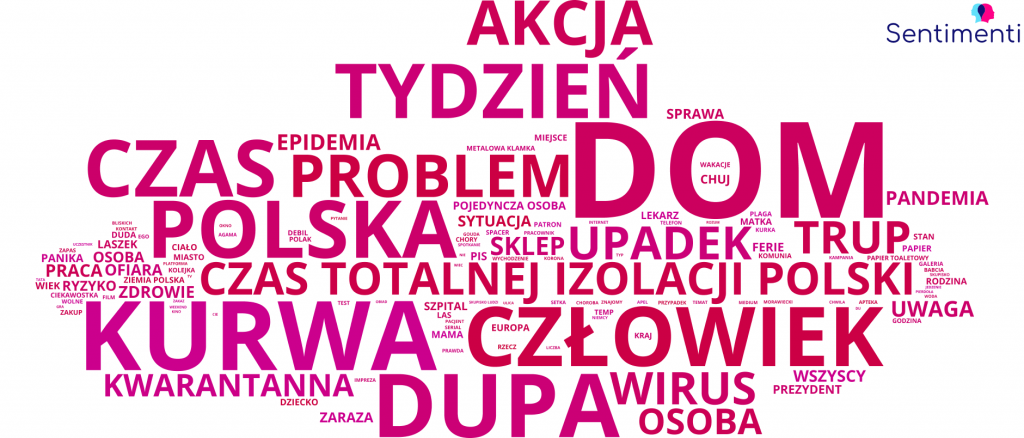During the second and third week of March, most of us, if possible, work from home or do “coronaffairs”. The Internet immediately gave birth to appropriate actions and hashtags, above all #stay home. We analyze the emotions expressed on this occasion and the topics raised in statements about isolation and remote working.
The action #stayhome was born on 10 March. On Tuesday it was known that we should spend the weekend and the following week at home, without unnecessary contact with other people – to avoid spreading the coronavirus. The COVID-19 pandemic has become a dominant theme for Google searches and private conversations. There were concerns and advice on how to prepare for forced isolation.
Emotions on the web
We’ve analyzed different hashtag statements. Within 6 days, 66672 mentions of the action were published. As you can see in the chart below, the discussion was very quickly gaining momentum. Hashtags enjoyed the greatest popularity during the weekend (March 14-15), when they shared ways of spending time “indoors”.

As far as emotions are concerned, the action took off with anger over joy and trust, but positive emotions took the lead already on Friday 13 March. What is important is that these hashtags are not used in statements in which we share our fears and anxieties – the emotion of fear is expressed in them in a weaker intensity.
What do we write about when staying at home?
As we have shown, #stayhome is a rather moderate emotion… or our average comes from many mixed emotions of varying intensity. We have decided to check how many references express joy or anger in an intensity higher than 50%. As you can see from the list below, this hashtag is more often associated with positive emotions.

What, apart from emotions, is the difference between strongly negative and positive statements? Probably they were raised in slightly different subjects. This is illustrated by the word clouds generated from the analysis of the content of the mentions.
Sharing the joy of the covid-19 time we write about the virus and the quarantine, but also about God, the “wonderful family” with whom we spend time, home, health. We also mention the entertainment – training, library, film, game, music. The theme of the mass and prayer is also mentioned in these statements.

Anger, on the other hand, is inevitably connected with curses, but also with fundamental themes. We mention Poland, we write not only about the quarantine, but also about the pandemic or epidemic, and even the plague. The topic of work appears. In these notes the words of corpses and victim, risk and panic appear.

Stay at home.
We started the action of voluntary isolation and remote working with some fears, but already at the weekend it started to arouse more enthusiasm in us. When we share our anger, it is usually not directed at the very necessity of staying at home as much as the situation related to the COVID-19 pandemic. It’s natural that we address this topic using the popular hashtag associated with the action to reduce the number of coronavirus infections. At the same time, “quarantine” makes us rather write about pleasant things – entertainment and staying with loved ones.
Our previous analysis of the coronavirus in the context of shopping was characterized by a high intensity of anger. We wrote there about our fears, hunting for toilet paper and shortages in supplies. The action #stańwdom shows a completely different aspect of the national fight against COVID-19. It is a very positive answer to the epidemiological threat, and yet we know very well that the attitude and mood are of great importance for our health. It is worth following this hashtag.